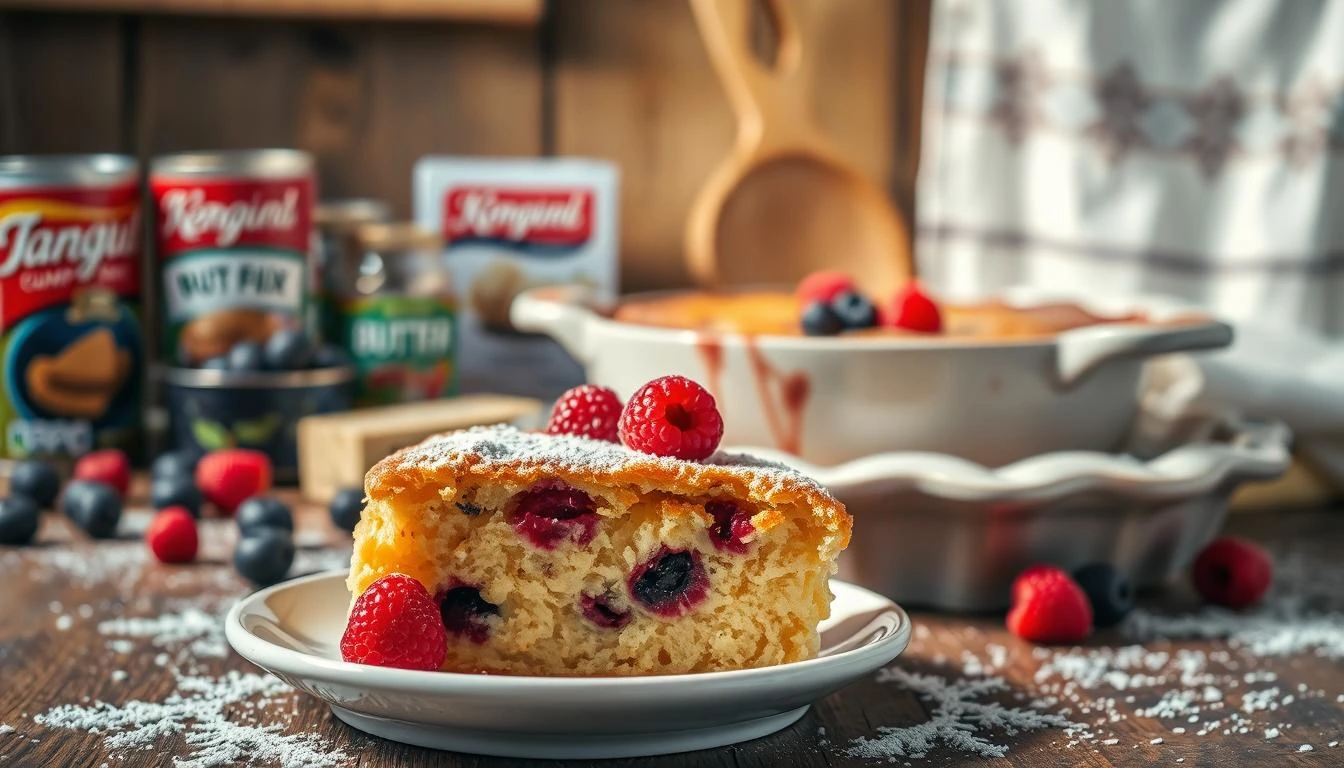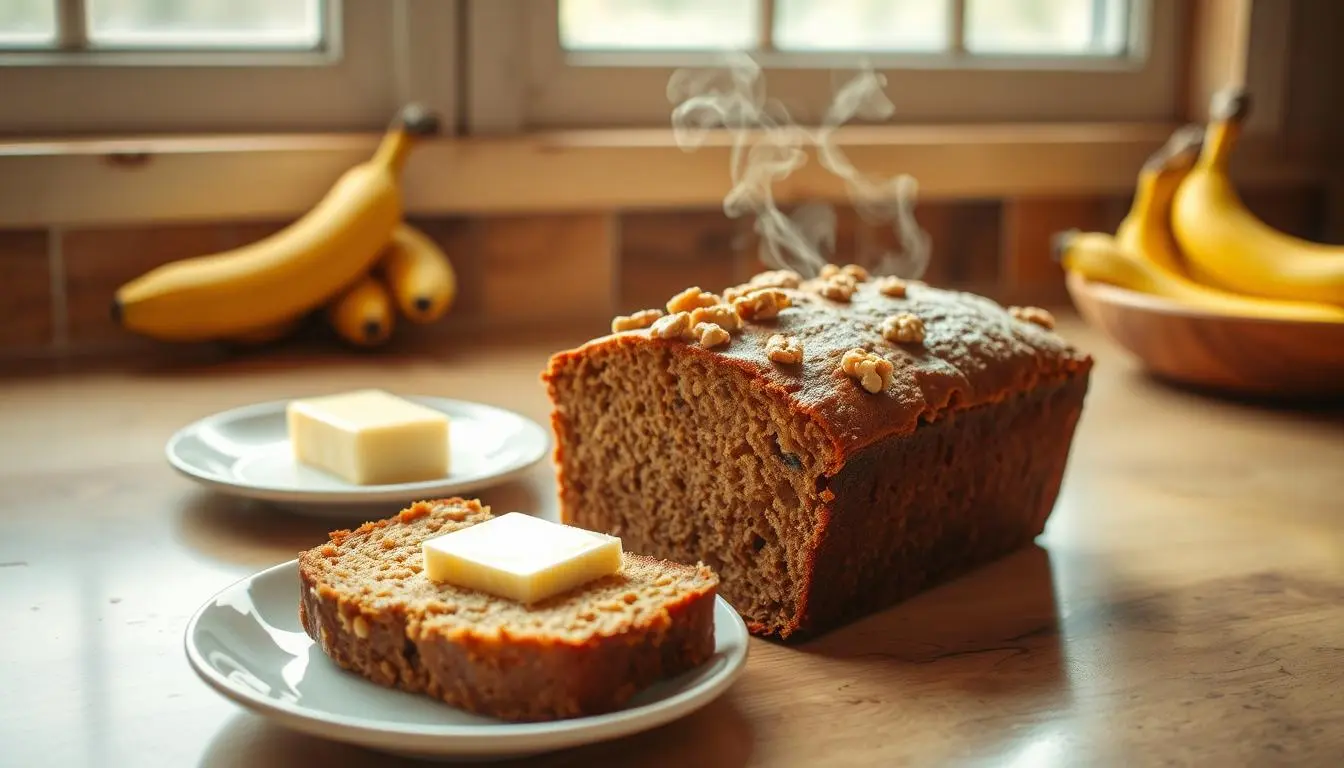You can enjoy the ideal balance of crunch and chew when you make New York-style bagels at home. You can create wonderful handmade big apple bagels that rival those from your favorite bakery with just a few basic components and a little perseverance.
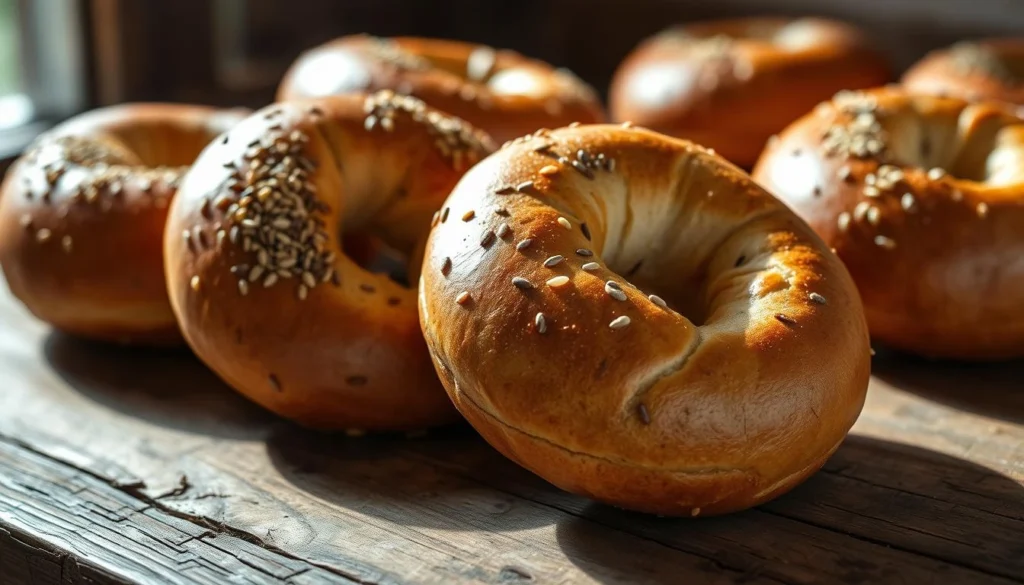
The procedure involves baking, shaping, kneading, and combining the dough to get the distinctive bagel consistency. You will learn the skills you need to make real Big apple bagels recipe in your own kitchen by following this step-by-step instructions.

Big Apple Bagels Recipe
Ingredients
Equipment
Method
- Activate the Yeast: In a bowl, mix warm water, 1 tablespoon sugar, and yeast. Let sit for 5–10 minutes until foamy.
- Make the Dough: In a large mixing bowl, combine bread flour, salt, remaining sugar, and yeast mixture. Knead for 8–10 minutes until smooth.
- First Rise: Place dough in a greased bowl, cover, and let rise for 1 hour or until doubled in size.
- Shape the Bagels: Punch down the dough, divide into 8 pieces, and shape each into a ball. Poke a hole in the center and stretch slightly.
- Second Rise: Place shaped bagels on a baking sheet, cover, and let rest for 20 minutes.
- Boil the Bagels: In a large pot of boiling water, add honey and baking soda. Boil each bagel for 1 minute on each side.
- Top & Bake: Place boiled bagels on a baking sheet, sprinkle with toppings, and bake at 425°F (220°C) for 20–25 minutes until golden.
- Cool & Enjoy: Let cool slightly before serving warm.
Notes
- For extra flavor, refrigerate the shaped bagels overnight before boiling and baking.
- You can swap bread flour for all-purpose flour, but bread flour gives the best chewiness.
Key Takeaways
- Get acquainted with the fundamental components and tools required to create bagels at home.
- Recognize the value of kneading and preparing the dough.
- Learn the trick to getting the ideal bagel texture.
- To make and bake your bagels, adhere to a step-by-step instructions.
- Learn how to personalize your bagels with different flavors and toppings.
The History and Allure of New York-Style Bagels
New York-style bagels have developed a unique culinary identity that is rooted in Eastern European Jewish customs. The history of these bagels is linked to the tale of immigration and cultural interchange that characterized New York City in the late 19th and early 20th centuries.
What Sets Big Apple Bagels Recipe Apart
The hand rolled craftsmanship, unique chew, and recognizable crust of Big Apple bagels recipe are well known. The traditional boiling procedure prior to baking gives them a distinctive texture that sets them apart from their commercially produced counterparts.
The Cultural Importance of New York Bagels
Representing the rich cultural legacy and diversity of New York, New York-style bagels have established themselves as a crucial component of the city’s cuisine scene. They are frequently the focal point of social events, whether it be a simple breakfast or a town function.
Genuine Bagels as Opposed to Commercial Ones
The ingredients, preparation techniques, and general experience that real New York-style bagels provide set them apart from mass-produced bagels. Real bagels are made using malt and high-gluten flour, and they go through a slow fermentation process that gives them their distinctive taste and texture.
In contrast, commercial bagels frequently utilize mass production techniques at the expense of these traditional methods, leading to a product that lacks the richness and personality of genuine New York-style bagels.
The Key Components of the Ideal Big Apple Bagels Recipe
A particular combination of components is needed to produce genuine Big Apple bagels recipe, which have a unique flavor and texture. To obtain the distinctive chewiness and crust of a classic New York-style bagel, the correct ingredients are essential.
The Significance of Flour with a High Gluten Content
Any genuine Big Apple bagel recipe is based on flour with a high gluten content. It usually has a protein content between 12 and 14%, which is higher than that of all-purpose flour and is necessary for the formation of the gluten network that gives bagels their chewy consistency. High gluten flour guarantees that your bagels will have the correct consistency and structure.
The Function of Malt and Other Important Components
Malt is crucial for improving the crust color and flavor of Big Apple bagels recipe, whether it comes in the form of malt syrup or malt powder. Yeast for fermentation, salt to regulate yeast activity and boost taste, and sugar to aid yeast fermentation are among the other essential components. The dough’s development can be impacted by the temperature and quality of the water, which is also essential.
Alternatives and Substitutions for Ingredients
Although a genuine Big Apple recipe bagel is best made using traditional ingredients, substitutions are permitted depending on dietary restrictions and availability. For example, while it might change the texture a little, whole wheat flour can be substituted for certain high-gluten flours to increase its nutritional value. Although it may be difficult to get the same texture, gluten-free flours may be tried out for those who have a gluten intolerance.
Precisely Measuring Ingredients
It is essential to precisely measure the components used in making bagels. When ingredients are measured by weight using a digital scale instead of volume, the dough is more precise and consistent. This precision is essential for getting the right taste and texture in your Big Apple bagels recipe.
| Ingredient | Role |
| High-Gluten Flour | Provides structure and chewiness |
| Malt | Enhances flavor and crust color |
| Yeast | Facilitates fermentation |
| Salt | Controls yeast activity and enhances flavor |
| Sugar | Feeds yeast for fermentation |
| Water | Affects dough development and texture |
What You’ll Need to Make Bagels
Making Big Apple Bagels recipe at home requires the correct tools. The quality of your bagels might be greatly improved by having the appropriate tools and a well-organized workplace.
Crucial Tools and Implements
You will need a few basic tools and utensils to get started making bagels. Among these are a big mixing bowl, a measuring scale, a dough scraper, a wooden spoon or dough whisk, and a baking sheet covered with parchment paper. A stand mixer with a dough hook attachment is useful, but you can also knead and mix the dough by hand.
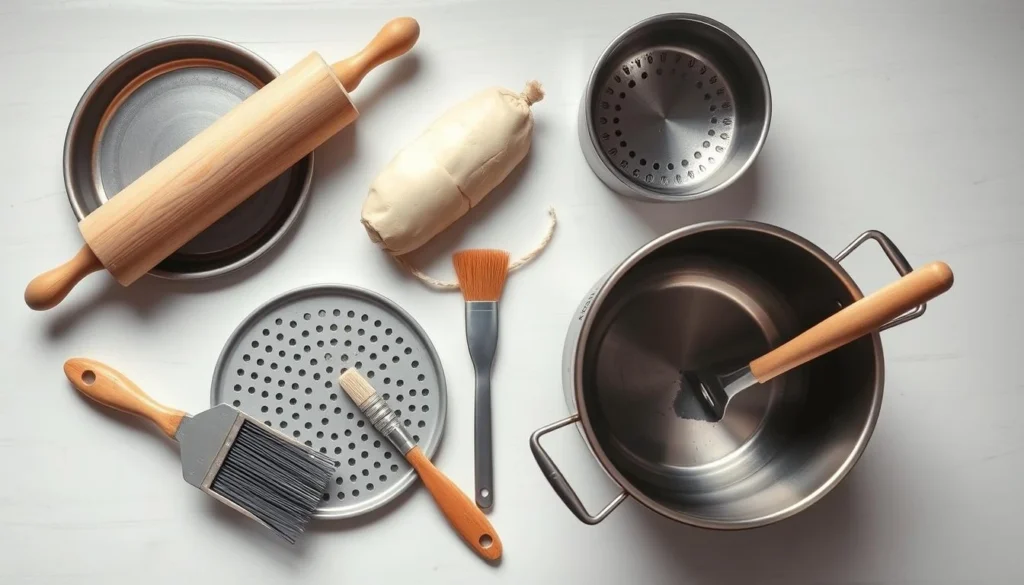
Professional results require optional accessories
Think about investing in a few additional items of gear for more professional results. That genuine crust can be obtained with the help of a bagel boiler or a big saucepan with a steamer basket. A proofing board for bagels can help maintain their shape during proofing, and a bench scraper is useful for handling dough.
Establishing Your Work Space
A seamless bagel-making process depends on having an organized workspace. Keep your countertops tidy and free of clutter. To simplify the mixing, kneading, and shaping procedures, keep your ingredients and tools close at hand.
| Equipment | Purpose |
| Mixing Bowl | Combining ingredients |
| Dough Scraper | Handling dough |
| Baking Sheet | Baking bagels |
Making the Ideal Dough for Bagels
Careful attention to every detail is necessary in order to create the distinctive chew and crust of a New York-style bagel. Understanding the significance of the components and the methods used to combine and knead the dough is the first step.
Methods of Kneading and Mixing
Flour, water, yeast, salt, and occasionally malt syrup or sugar are combined during the first mixing of the dough. These ingredients must be combined until a shaggy dough is produced, which is then kneaded. Kneading can be done by hand or with a stand mixer with a dough hook attachment. The chewy texture of bagels comes from the gluten that is created during kneading. The dough is kneaded by hand for around 10 minutes or with a mixer for five to seven minutes until it is smooth and flexible.
The First Rise: Time and Temperature Factors
The dough is left to rest and rise after being kneaded. The flavor and texture of the bagels are significantly improved by this initial increase. The dough should be stored in a warm, draft-free location, ideally with a temperature range of 75°F to 78°F (24°C to 25°C). Depending on the yeast’s activity and the surroundings, the rise might occur between one and two hours.
Checking that the Dough is Forming Correctly
The poke test is a straightforward technique for determining whether the dough has risen adequately. The dough is ready when you softly push it with your finger and the depression bounces back slowly. It requires more time if it bounces back fast. It could be overproofed if it doesn’t bounce back at all.
Advantages of Overnight Fermentation
Many Big Apple Bagels recipe advise an overnight fermentation in the fridge. Due to the slow fermentation process, the flavor of the bagels is improved and their texture is enhanced. The yeast rises more slowly and gradually in the cold climate because its activity is slowed down.
You’ll be well on your way to producing real Big Apple bagels recipe at home if you follow these instructions and grasp the significance of each phase in the dough preparation process.
A Guide to Shaping Techniques for Big Apple Bagels Recipe
You may make flawless, chewy bagels by using the correct dough-shaping procedures. One of the most important processes is shaping, which demands patience and talent. The traditional methods of forming bagel dough and recommendations for maintaining consistent size will be covered in this section.
The Traditional Rope Technique
To create the bagel shape, the traditional rope method requires rolling the dough into a rope and then shaping it into a circle. Begin by separating your dough into equal pieces to do this well. After that, roll each piece into a 68-inch-long rope. To seal the bagel, overlap the ends of the rope to form a circle, then push them together.
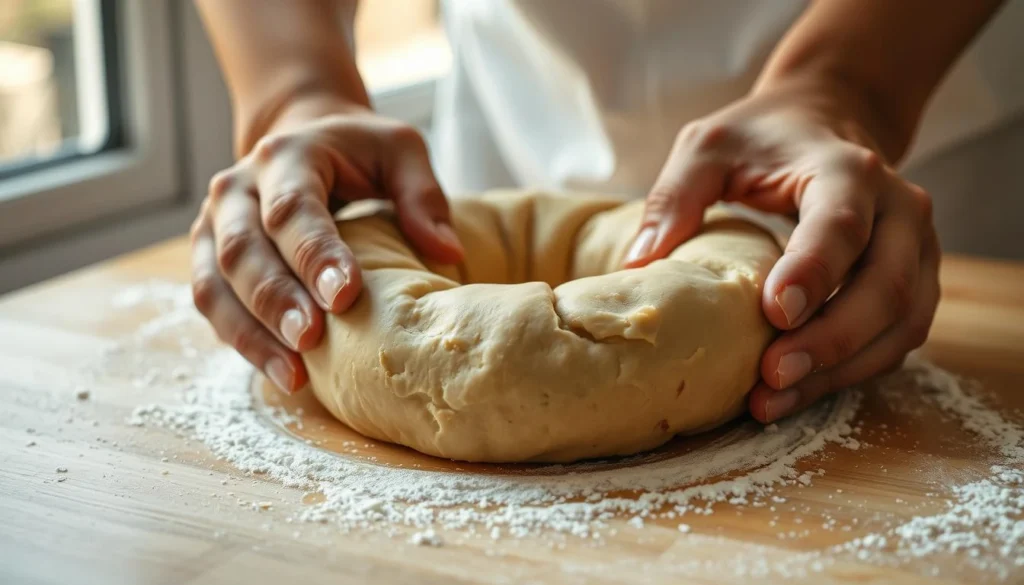
The Punch Through Method
The punchthrough technique involves creating a hole in the middle of the dough ball and then extending it outward to create the bagel. With this procedure, you can make a bagel that is more uniformly shaped and has an even hole size.
Recommendations for determining uniform sizes
It’s essential to divide your dough precisely if you want consistent sizing. A digital scale can be used to make sure that each piece of dough weighs the same. Also, use uniform pressure while shaping to prevent any areas of the dough from becoming too thin.
- Use a digital scale to split the dough into equal pieces.
- When forming bagels, use consistent pressure.
- Regularly check the size of your bagels as you form them.
Typical Molding Errors to Steer Clear Of
Not properly sealing the bagel, which can cause it to break open during boiling or baking, and stretching the dough too thin, which results in a hard bagel, are two typical errors. To prevent these problems, be sure to handle the dough with care and seal the ends well.
You will be well on your way to making real Big Apple Bagels recipe at home if you learn these shaping methods. Don’t give up if your first try doesn’t go as planned because practice makes perfect.
The Critical Boiling Procedure
Boiling is essential for getting the distinctive chew and crust of a New York-style bagel. In home baking, this is the step that distinguishes genuine bagels from those that are purchased or made incorrectly.
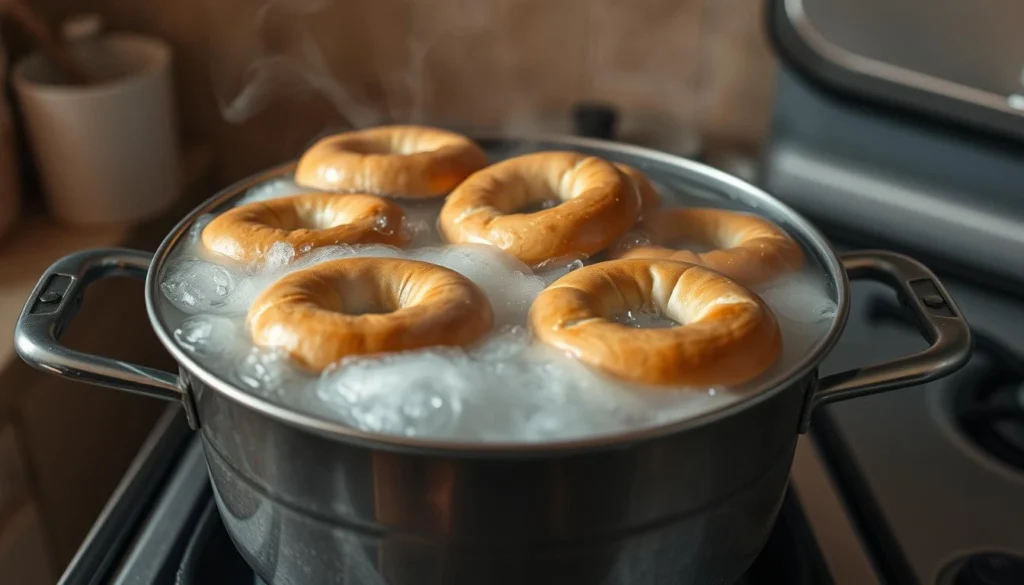
Water additions for genuine taste
The water used to boil bagels is not simply water; ingredients play a crucial role in producing that real Big Apple Bagel recipe taste. The water is often brought to a boil with the addition of barley malt or malt syrup. These components give the bagel its crust color, taste, and texture. Although malt is favored for its unique flavor, some recipes also call for the use of sugar or honey.
Temperature and Time Management
The temperature of the water and the boiling time are key considerations. Bagels are usually boiled for 12 minutes on each side. The water should typically be at a rolling boil, which is about 212°F (100°C). To aid in browning, some recipes advise adding a little bit of sugar to the water. Maintaining the temperature is crucial; if it’s too low, the bagels won’t form the proper crust, and if it’s too high, the outside may cook too quickly.
Indications of a well-boiled bagel
A well-cooked bagel will have a shiny surface and a noticeable puffing around the edges. When you flip them, they should begin to develop a smooth, uniform crust. The boiling procedure is being carried out correctly, as evidenced by these visual signals.
The Science Behind Boiling Bagels
The two main reasons for boiling bagels before baking are that it helps to produce the distinctive crust through a process called gelatinization, where the starches on the surface gelatinize and then dry to form a crust, and that it helps to establish the dough’s structure before baking, which contributes to the chewy inside.
| Boiling Time (minutes per side) | Water Temperature (°F) | Result |
| 1 | 212 | Light crust, soft interior |
| 2 | 212 | Thicker crust, chewier interior |
Making the Perfect Homemade Bagel
Putting your cooked bagels in the oven to bake is when the moment of truth occurs. The ideal crust and chewy inside that define Big Apple Bagels are achieved during this last stage.
Temperature and Oven Arrangement Guidelines
It’s important to preheat your oven to the proper temperature. A temperature of 425°F (220°C) is advised for baking bagels. To aid in crust creation, make sure your oven is preheated and use a baking stone if possible. A baking stone holds heat and aids in getting a crunchy crust.
Advice on Setting Up Your Oven:
- Before baking, preheat your oven for at least 30 minutes.
- To guarantee uniform baking, use the center shelf.
- Think about using the convection option for more even baking if you have one.
- Methods for Applying Toppings
You may improve your bagels with a variety of toppings before baking. A simple salt topping, sesame seeds, or poppy seeds are all traditional choices. Gently coat the tops of the bagels with egg wash or water, then sprinkle on your chosen topping.
Egg Wash Recipe: Mix 1 egg with 1 tablespoon of water. Brush lightly onto the bagels before adding toppings.
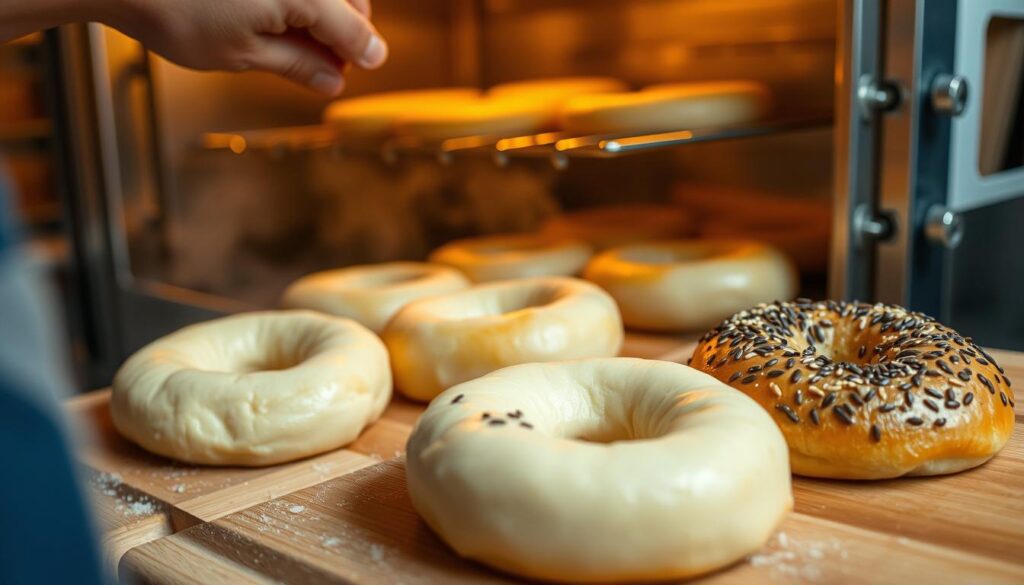
Time for Baking and Visual Cues
Bake your bagels for 15 to 20 minutes, or until they are golden brown. The precise baking time might change depending on the size of your bagels and your oven. To avoid overbrowning, keep an eye on them for the last several minutes.
Signs of Readiness:
- a golden brown crust.
- When tapped on the bottom, the sound is hollow.
Cooling and Relaxation Phase
Allow your bagels to cool on a wire rack after baking. This cooling time is essential since it gives the bagels time to develop their texture and makes them easier to work with. Before cutting, a rest period of at least 30 minutes is advised.
You may get the real flavor and texture of a Big Apple Bagel by following these instructions for baking your homemade bagels to perfection.
Addressing Typical Bagel Issues
Although common bagel issues can be annoying, they can frequently be remedied with minor tweaks. Even if you are a novice or seasoned baker, problems such as misshapen or thick bagels might occur, but knowing the reasons and remedies can help you get better results.
Handling thick or heavy bagels
Overmixing the dough or using too much flour can frequently lead to bagels that are thick or heavy. To prevent this, make sure your ingredient measurements are precise and that you only mix the dough until everything is combined. A thick bagel can result from underproofing as well, so be sure to allow the dough enough time to rise.
Correcting distorted or flat bagels
If the dough is overproofed or the bagels aren’t shaped correctly, they might be misshapen or flat. To fix this, pay close attention to the consistency of the dough and make sure the bagels are shaped uniformly. The end result can be greatly influenced by using the correct shaping methods.
Dealing With Problems Regarding Crust and Texture
There are a number of variables that might influence the texture and crust of bagels, such as the temperature of the oven and the amount of time spent baking. Check the temperature accuracy of your oven and make sure you’re cooking your bagels for the appropriate amount of time if they’re not getting the crust you want. Additionally, the crust can grow better if steam is present throughout the baking process.
Making Recipe Modifications for Various Environments
The dough of bagels might be impacted by a variety of circumstances, including humidity and high altitude. Changing ingredient ratios or proofing times may be necessary to adapt. For example, you may need to lower the yeast or raise the liquid at higher altitudes. No matter where you are, comprehending these changes will enable you to get consistent outcomes.
You may enhance your bagel-making abilities and enjoy delectable, homemade Big Apple Bagels by addressing these typical problems and making the necessary changes.
In summary, here’s how to store, serve, and savor your big apple bagels recipe that you made at home.
Having learned how to create Big Apple Bagels recipe at home, it’s now time to learn how to serve, store, and eat them. Keeping your homemade bagels in the right way is essential for preserving their freshness and texture. They can be stored for up to three days at room temperature in an airtight container, or frozen for extended storage.
When serving, think about traditional pairings like cream cheese or lox, or experiment with your toppings. Homemade bagels are enjoyable for more than just their taste. It’s also about the experience. Enjoy your freshly baked bagels with loved ones, or enjoy them with a steaming cup of tea or coffee.
By following the steps in this book, you have not only acquired a new skill but have also learned how to prepare genuine New York-style bagels at home. Keep trying out various flavors and toppings to make your own Big Apple Bagels unique.
Frequently Asked Questions
Which kind of flour is ideal for producing Big Apple bagels recipe ?
The key component of genuine Big Apple bagels recipe is high-gluten flour, which gives the dough the required texture and chewiness.
Are there any ingredients in the Big Apple bagel recipe that I may replace?
Using the recommended ingredients, such as high-gluten flour and malt, is essential to achieving the distinctive flavor and texture of Big Apple bagels, although some substitutions are possible.
What is the secret to getting the distinctive crust on my handmade bagels?
For the crust to form, the boiling procedure must take place before baking. It’s critical to regulate the temperature and time while using water additives such malt or barley malt syrup.
What caused my bagels to be thick or heavy?
Overmixing the dough, underproofing, or the wrong oven temperature can all lead to thick or heavy bagels. Making changes to your proofing and mixing procedures and making sure your oven temperature is correct can all help.
What is the best way to keep my handmade Big Apple bagels recipe ?
Keep your bagels fresh by storing them in an airtight container at room temperature for up to three days, or freezing them for longer storage.
Is it possible to prepare Big Apple bagels recipe without a stand mixer?
Although it takes more time and effort, Big Apple bagels can be made without a stand mixer by kneading and mixing the dough by hand.
What is the best temperature for cooking bagels?
The best temperature range for boiling bagels is between 190°F and 212°F, although some recipes call for a particular temperature to produce the greatest outcomes.
When shaping my bagel dough, how can I ensure that the sizes are consistent?
Divide the dough into equal pieces to achieve uniform sizing, and use a consistent shaping method, such as the classic rope method or the punch through method.

